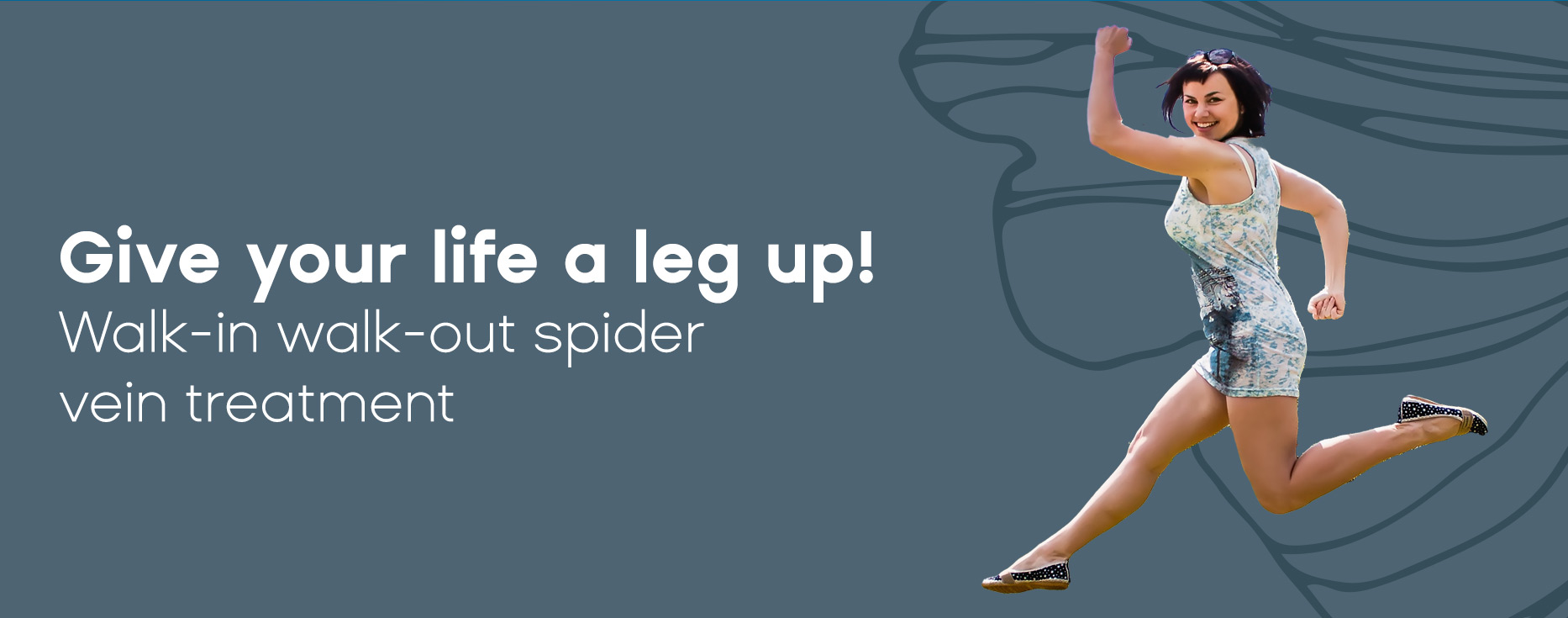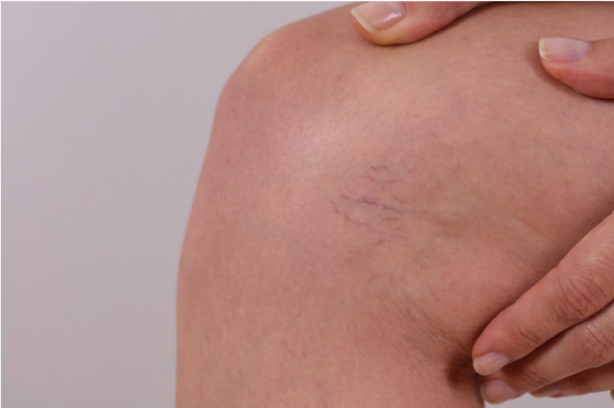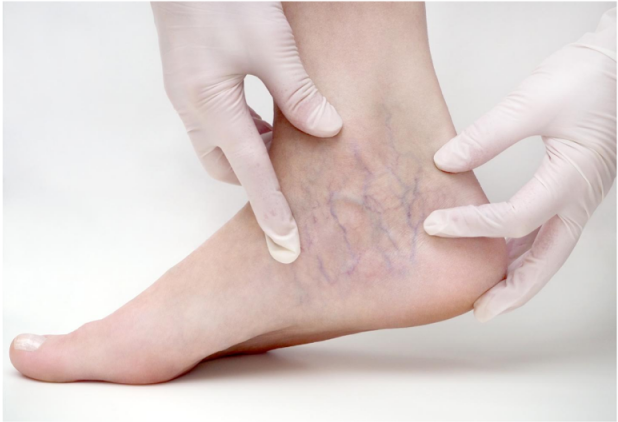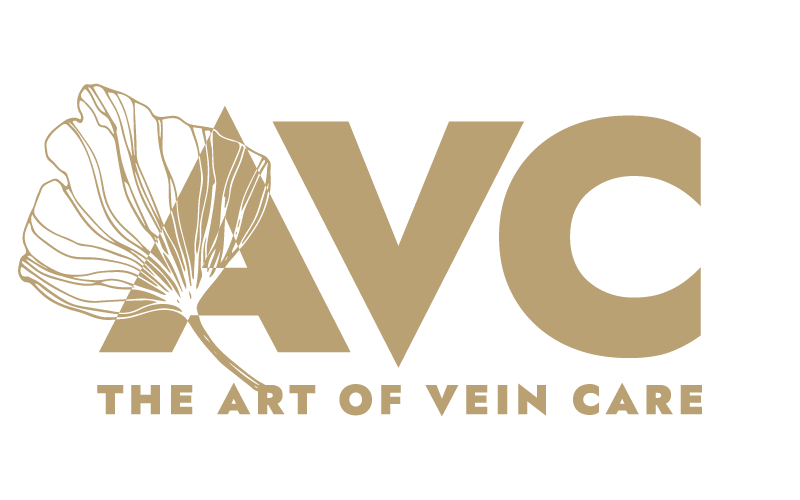Spider veins

Spider veins are sometimes called thread veins and the technical word is telangiectasia.
These are the very fine red vessels that are less than 1mm in diameter and develop on the legs, face, chest and neck.
They are often fed by larger and slightly deeper blue straight veins called reticular veins. Spider veins and reticular veins are flat, not raised like varicose veins.
Spider veins are new veins that have grown in the skin whereas varicose veins are veins which have always been there but have become dilated (stretched up and bulging) and tortuous (windy or twisted) due to high pressure in the superficial venous system.
The cause of spider veins is unclear, but they are often associated with varicose veins.
There are usually deeper veins feeding the patch of spider veins so they are probably associated with increased pressure in the venous system.
The increased pressure is due to valves not functioning properly.
Some authors suggest that spider veins are associated with hormonal changes.
They become more extensive with age.


Spider veins on the legs are harmless but can cause symptoms such as aching or itching.
Very occasionally they can bleed, especially if they are being fed by large reticular or varicosed veins.
Bleeding can happen if the spider veins have been bumped.
Often the bleeding is worse if the trauma occurs in the shower because the heat opens up the veins so that the pressure is higher.
Bleeding spider veins is an absolute indication for treatment though most of the time they are a cosmetic issue.
If the spider veins are associated with varicose veins, the varicose veins will need to be treated first.
If there are no varicose veins then one may choose not to do any investigations.
The issue will then be whether there are underlying large veins which one cannot see.
The choice will then be up to the individual client.
If you want an optimal and long lasting result from treatment then investigation is recommended.
Spider veins are investigated by ultrasound.
This is safe, painless and noninvasive, so there are no needles or injections.
Gel is put on the skin and the blood flow in the veins is examined.
That way, the cause of the spider veins can be determined, and a discussion about which treatment is most suitable can be had with your doctor.
If there are varicose veins, these will need to be treated first (see the varicose veins section on this website).
Spider veins are treated with sclerotherapy:
Ultrasound guided sclerotherapy: Sclerotherapy involves injecting a solution (either liquid or foam solution of Aethoxysclerol) into the spider veins.
The injection is done using ultrasound guidance so that the injection is highly accurate and the solution is injected into the correct spot (ultrasound guided sclerotherapy – UGS).
The aim is to find the feeding vein and treat it first.
Often the solution flows into the patch of spider veins and it initially disappears completely.
The solution then creates a reaction in the spider vein wall so it then becomes red and angry.
The reaction causes the spider vein to block off so it becomes a thread of scar tissue under the skin (the vein “scleroses”) which can not be seen.
Direct vision sclerotherapy: This involves injecting a similar solution (or a lower strength) directly into the spider veins.
It is done using magnification and with a special polarised light which makes them easier to see and inject.
There are two issues that are asked about most.
The first issue is that injecting spider veins does not prevent new ones from growing.
However, the more complete the initial treatment, the longer the satisfactory result will last.
The second issue is the degree of success in the outcome.
It is unlikely that all the spider veins will disappear completely (unless there are very few and they are very small).
One should be able to achieve an even appearance where most of the spider veins have faded significantly and many have disappeared completely.
An improvement of up to 60- 80% percent can be expected within three to six months. But this will depend on the number of treatments.
